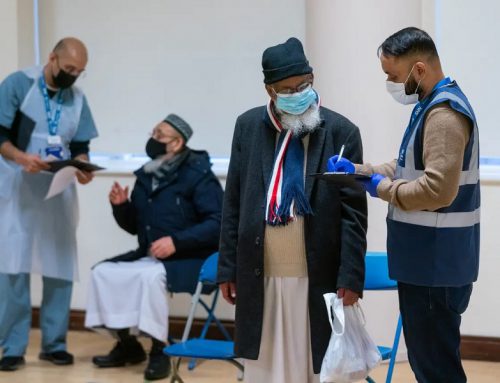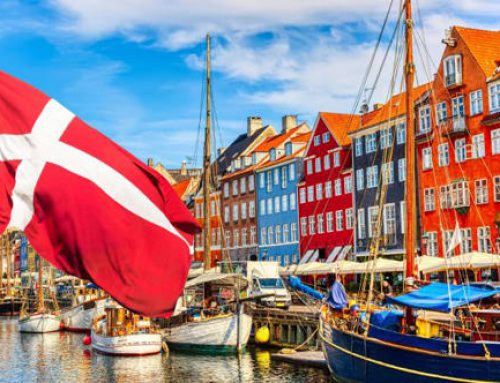Extremist and Jihadist groups suffer of a chronic problem that causes a great rift between their ideology and to what extent does that doctrine concord with the true teachings of the Islamic religion. This ideological and historical dilemma stems from the fact that most leaders and ideologues in such movements are non-specialists in Sharia and Islamic studies, and don’t in the first place possess sufficiently extensive knowledge in the studies of the Quran and Sunnah which they are supposed to base their fatwas of legalizing bloodshed on.
What troubles me is always wondering about why didn’t any senior scholars of al-Azhar al-Sharief, al-Harameen, Al-Quaraouiyine University or other major Islamic teaching centers declare the opening and mobilization for Jihad here and there like those young – mostly engineers, former military soldiers and others with little or no knowledge in religion studies – did?
Then why were most contemporary Islamist movements established by those with no solid knowledge in Sharia studies? Isn’t it possible that those people’s weak understanding of the wide scope of Sharia and inability to full comprehend the rules of Islam is the reason behind the spread of extremism amongst narrow-minded and ignorant groups? This would also explain the rarity of extremism amongst well-versed people who are knowledgeable and specialized in Sharia studies.
In a study prepared by the Voice of Wisdom Center in October 2016, which followed the scientific and scholarly backgrounds of more than 45 leading jihadist leaders and senior Jihadist theorists, the study showed that only three of them received religious university education, while 13 of them were engineers with little or no knowledge about Sharia studies. Besides, 10 of them were of low academic level and did not even pass the threshold of secondary education. Of them, 7 were of a military background; such as retired police personnel and excommunicated or fugitive army officers.
The study carried some noteworthy conclusions; such as extremism and the tendency to join violent and terrorist groups increases amongst engineering school graduates in comparison to others. It is sufficient to point that the first three extremist movements that emerged in modern times in the Islamic world in the late 1960s and early 1970s were founded by three engineers. First, Shukri Mustafa, the founder of ‘Takfir wal-Hijra(Excommunication and Exile Group).’ Second, physics and science teacher Saleh Sirriyya, founder of ‘al-Faniya al-Harbiya’ (the technical military) movement. And third, Abdul Salam Faraj, one of the most important founders of ‘al-Jama’a al-Islamiyya’ in Egypt and the author of the infamous book ‘al-farida al-ghayba’ (The Neglected Duty).
Hence, the convergence between engineering and extremism raises many questions about the relationship between radicalism and engineering.
So, let’s take a look at the nature of terrorist attacks and their perpetrators to go further in-depth with this question. On October 13, 2009, Libyan Mohamed Gham blew himself up with an improvised explosive device in a military barracks in Milan, Italy. He was an electronic engineer who graduated from an Italian university. On December 25 of the same year, Omar Farouk Abdelmutallab attempted to blow up a plane above the skies of Detroit in the US with an improvised explosive device. Abdelmutallab was the son of a bourgeois Nigerian family and a graduate of the London College of Engineering.
In February 2010, computer engineer Joseph Andrew Stack attacked the Echelon building in Austin with his plane in a suicidal attack whose motives shook the United States. In March of the same year, Engineer John Patrick Bedell fired at the entrance to the Pentagon building and wounded two officers standing at the gate. In May of the same year, Computer Engineer Faisal Shahzad was arrested at John F. Kennedy Airport after his failed attempts to detonate a bomb in New York’s famous Times Square. In the same month, engineer Fayez Mohammed was arrested at Karachi airport hiding in his shoes a battery and electrical circuits that are usually used to make bombs.
Of the 19 terrorists who carried out the Sept. 11 attacks, 8 were engineers, and no single one of the whole groups was specialized in Islamic studies. Add to this that the three people implicated in planning the 2004 Australian Embassy bombing in Jakarta were engineers. Also, Ramzi Yousuf and his colleague Iyad Ismael were engineers amongst the group that planned and executed the 1993 World Trade Center bombing.
Mohamed El-Ahmar a Tunisian specialist in Islamic history proved in one of his studies that more than 60 percent of the Tunisian jihadists who joined Daish (ISIS) and the different al-Qaeda branches were engineers and those with little knowledge of Islamic studies.
Another study conducted by the Voice of Wisdom Center on the most famous 104 names in the world of extremism and jihadist movements, (the study was confined to the names of founders and theorists of extremist Islamist movements), reveals that 26 people on the said list were engineers, corresponding to a quarter of the list. Another quarter were people of little or no education. All other disciplines of Medicine, Law, Economics and Sharia constituted half of the studied segment.
This noteworthy increase in the number of engineers amongst the ranks of extremist movements reminds us of the famous boasting incident of Ayman al-Zawahri in front of Dr. Abdullah Sheliver, Media Professor at the American University in Cairo; when the former took Dr. Sheliver in 1974 in a tour around the medical faculty at Cairo University and told him in front of a scene of Islamist students who were getting ready to launch demonstrations that al-Jama’a al-Islamiyya, which he was a member of, experienced great success and spread amongst medical and engineering students more than other faculties.
This reminds us of the study done by the Egyptian sociology scholar, Saad Eddin Ibrahim, in the year 1981 about 34 members of ‘al-Faniya al-Harbiya group’, and al-Takfir wal-Hijra movement, whom were all detained in Egyptian political prisons by the end of the 1970s.
Dr. Ibrahim’s study concluded that amongst the 34 detainees, 29 of them were university students or graduates. And amongst those 29 students; 9 were engineers of technical specializations, 5 were agricultural engineers, 7 were medical doctors, 2 were pharmacists, 2 were students of technical military colleges, and only one was a graduate from the literature faculty.
This love relationship between engineers and extremism was emphasized by an in-depth study conducted recently by Diego Gambetta & Steffen Hertog, under the title; “Engineers of Jihad the Curious Connection between Violent Extremism and Education.” Which was published by Princeton in 2016. The study followed the biography of 497 Muslim extremists; all of whom were members of radical Jihadist groups from 35 different nationalities in the Muslim World. The list included extremists from the 1970s until 2011.
The study goes in depth on the educational levels of 436 people from the sample. Of those 436; only 28 people were of educational levels lower than primary school, 76 people were on middle school educational level, while 231 people, about 69% of the sample, were on university education level; 40 of those studied in Western universities, and 207 of those 231 were finished with their university degrees.
The strange thing here is that 93 members, or 44.9% of the 207 who graduated from university, were engineers or had higher degrees than a BA degree in one of the engineering branches, which is almost half. If we add to them the proportion of those with medical specialties (21 members) and science (8 members), which are considered elite specialties, the proportion rises to 58.9%.  The three civil engineering disciplines; civil, electronic and computer engineering dominat the vast majority of the studied sample. This dramatic increase in the proportion of engineers, in the in the first and second ranks of extremists, is four times the number of extremists in other majors. Which forces us to try to understand the mystery and equation that brought together an elite specialty and extremism and terrorism that is usually associated in our minds with those uneducated or of poor educational backgrounds.
The three civil engineering disciplines; civil, electronic and computer engineering dominat the vast majority of the studied sample. This dramatic increase in the proportion of engineers, in the in the first and second ranks of extremists, is four times the number of extremists in other majors. Which forces us to try to understand the mystery and equation that brought together an elite specialty and extremism and terrorism that is usually associated in our minds with those uneducated or of poor educational backgrounds.
Does the economic factor and financial situation play a role in attracting the largest number of engineers who are often shocked by the bitter reality after graduating from universities, when most of them are unable to get a creative job? Or is the need of extremist groups to recruit engineers who master the manufacturing of explosives and weapons is the reason for these group’s special focus on attracting more engineers than other graduates of other disciplines? Or is there a secret in the specialty of engineering itself that shapes its students in accordance with certain patterns of thought which are easy to drift towards extremism and obscurity.
Let us start with the first factor: if we assume that unemployment and the absence of jobs are the cause. Although the above study has shown that the rate of extremism among engineers is higher than other majors in all 35 Islamic countries to which belonged the 497 members in the study. The only exception here was Saudi Arabia, which didn’t witness any significant recruitment of engineers to extremist groups in comparison to graduates of other disciplines.
In the studied sample, there were 33 Saudis, of whom only 12 were university graduates, and there were only two engineers who joined extremist movements. This Saudi uniqueness may answer the problem. Saudi graduates from engineering departments usually get high-paying jobs in their country and do not have to migrate in search of work, thus reducing the proportion of extremists among them.
However, this answer may confirm the status of Saudi engineers but does not confirm the rest of the studied sample. Many of the most highly regarded radical engineers, for example Azhari Hussein, mastermind of the Bali bombings in 2004 and 2005, was an engineer and a Ph.D. graduate of the British University of Reading, in addition to being a successful professor at a prestigious Malaysian university. Omar Farouk Abdulmutallab was a descendant of a rich family and never suffered from a lack of needs, which is the case of many of the samples dealt with in the study, where most of them got positions in companies, some of them prestigious international companies.
And about the possibility of radical groups focusing on recruiting engineers to exploit their technical and scientific abilities in making bombs and explosives, the study of Diego Gambetta & Steffen Hertog proves that this possibility is false because the number of engineers who specialized explosives manufacturing for the benefit of extremist groups is equivalent to the number of explosives manufacturers from other disciplines. Many non-engineering specialists have mastered explosives manufacturing through secret courses they have received in training camps. Where manufacturing explosives no longer requires high university skills.
Remains the third possibility, that the nature of engineering has an effect on the tendency of many graduates to be radicalized. Which is the view most accepted in the abovementioned study; where it pointed out that there is a hidden logic in society that makes the probability of being struck by lightning is one in a million, while this probability increases amongst engineers to four in a million. That is, the probability that one of the public becomes an extremist is one in a million while the probability that an engineer becomes an extremist is four in a million. How? And why?
I believe that the nature of geometry and its laws which have one solution to scientific questions that accept only one way of understanding which thus influence the mindset of the students of science, such as engineering. In physics and engineering sciences, the chances of multiplying one question are always limited, usually confined to one solution subject to the laws of nature. When an engineer notices this, the matter ends, and the engineer begins a journey to challenge other issues, a logic that is completely different from the logic of philosophical and social sciences that deal with the phenomenon of humanity multifaceted and thus multiple concepts, solutions and views. This is the same for the doctrinal and religious sciences, which are not subject to the logic of the only solution, as it is impossible to find a single jurisprudential interpretation of an issue, but dozens of opinions and interpretations that have been mentioned, thus, in human sciences and there are a diversity of views and differences, and sometimes they seem to be contradicted, which inevitably affects the mentality of practitioners and specialists of these sciences, where toughness among them disappear and then have a space for the opposite opinion.
If we use the logic that governs engineering and physical sciences – based on the inevitable natural laws that do not change and do not accept different opinions – to understand religious and ideological issues, we will have a marginal mentality that all extremists share, which does not believe in the multiplicity of opinions on doctrinal issues. These people see truth as one and maintain that it does not vary, and therefore see their opinion as the only right, and therefore considers themselves the only right to express the truth, and the machine of accusing people of being infields starts to give us people who are good at cutting necks and those who only believe in explosive belts. Perhaps this explanation can answer the question of why there are many engineers in the ranks of extremist movements. The engineer who is used to the idea of one answer, fixed physical laws, and inaccurate measurements cannot adapt to the many interpretations of one issue in religious issues. These choices are critical for this engineering mentality, which leaves no space for difference. This mentality sees things as white or black, and there is no room for the presence of other colors among them. The issue of religion according to the logic of engineering can only be Haram or Halal, Islam or infidelity, and there is no room for those exceptions and considerations that the scholars of Islam spent centuries to explain it and provide the message behind it.






